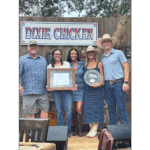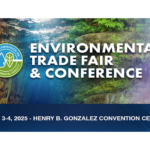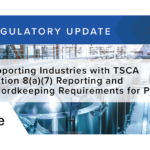
If you are planning any construction or development projects in wetland areas in Sugar Land, Texas, it is important to understand the requirements and regulations surrounding the Section 404 permit. This permit is issued by the U.S. Army Corps of Engineers (USACE) and is aimed at protecting the nation’s waters, including wetlands, by preventing their destruction or degradation. In this article, we will provide an overview of the Section 404 permit and its importance, as well as discuss the application process, common misconceptions, compliance, and violations.
Understanding the Basics of Section 404 Permit
What is a Section 404 Permit?
The Section 404 permit, authorized under the Clean Water Act, is required for any project that involves dredging or filling in a body of water, including wetlands. It is important to note that wetlands play a crucial role in maintaining water quality, providing habitat for various species, and preventing floods by acting as natural sponges. Therefore, the aim of this permit is to ensure that any activities in wetland areas are carried out in an environmentally responsible manner.
Obtaining a Section 404 permit involves a thorough review process by regulatory agencies to assess the potential impacts of the proposed project on wetlands and other water bodies. This review includes evaluating alternatives to the project that would have fewer environmental consequences and ensuring that mitigation measures are in place to offset any unavoidable impacts.
Importance of Section 404 Permit in Wetland Areas
Wetlands are considered vital ecosystems, providing a wide array of ecological benefits. They act as filters, removing pollutants from water, and serving as nurseries for many aquatic species. Additionally, wetlands help mitigate the impacts of climate change by storing carbon dioxide and reducing flood risks. Therefore, obtaining a Section 404 permit is crucial to avoid any negative impacts on these valuable resources.
Furthermore, wetlands are essential for maintaining biodiversity, as they support a variety of plant and animal species that are uniquely adapted to these specialized habitats. The loss of wetlands can lead to the decline of rare and endangered species that rely on these ecosystems for survival. By requiring a Section 404 permit for projects impacting wetlands, regulatory authorities can ensure that proper measures are taken to protect the rich biodiversity found in these areas.
The Application Process for Section 404 Permit in Sugar Land TX
Required Documentation for Application
Before submitting an application for a Section 404 permit in Sugar Land, Texas, it is crucial to gather and provide detailed documentation to the United States Army Corps of Engineers (USACE). This documentation should include comprehensive project plans outlining the scope of work, environmental assessments detailing potential impacts, and a thorough analysis of how wetlands and water resources may be affected. Collaborating with a professional consultant or environmental specialist is highly recommended to ensure the accuracy and completeness of the submission.
Additionally, it is essential to consider the specific requirements and regulations set forth by the USACE for projects in Sugar Land, as they may vary from other regions. Understanding and meeting these requirements from the outset can streamline the application process and help prevent delays or rejections.
Timeline and Steps in the Application Process
Upon submission of your application for a Section 404 permit, the USACE will embark on a comprehensive review process to evaluate the potential impacts of the proposed project on wetlands and water resources in Sugar Land. This review may involve on-site visits, consultations with subject matter experts, and a detailed examination of the submitted documentation. The thoroughness of this assessment is crucial in determining the environmental implications of the project.
It is important to note that the timeline for permit approval can vary significantly based on factors such as the complexity of the project, the extent of environmental impact, and the availability of resources for review. Applicants should maintain open communication with the USACE throughout this process to address any inquiries promptly and facilitate a smoother review.
Following the completion of the review process, the USACE will issue a formal decision on your application. This decision can take the form of an approval, a denial with specific reasons, or a request for modifications to address concerns. In the case of approval, the issued permit will contain detailed conditions and mitigation measures that must be strictly followed during the construction or development phase in Sugar Land, Texas.
Common Misconceptions about Section 404 Permit
Misconception 1: It’s Only for Large-scale Projects
One common misconception about the Section 404 permit is that it is only required for large-scale projects. However, the permit applies to any project that involves dredging, filling, or construction activities in wetland areas, regardless of their size. Even small-scale projects, such as building a residential property or installing a dock, may require a Section 404 permit if they impact wetlands.
Misconception 2: The Permit is Easy to Obtain
Another misconception is that obtaining a Section 404 permit is a straightforward and easy process. In reality, the permit application requires detailed documentation and a thorough analysis of potential impacts. The USACE evaluates each application on a case-by-case basis, considering factors such as wetland functions, ecological benefits, and the feasibility of proposed mitigation measures. Therefore, it is important to plan ahead and engage with experts to ensure a smooth and successful application process.
Compliance and Violations of Section 404 Permit in Sugar Land TX
Consequences of Non-compliance
Failure to comply with the conditions outlined in the Section 404 permit can have serious consequences. Violations can result in legal actions, penalties, and even project shutdowns. Additionally, non-compliance can lead to significant environmental damage, including the loss of wetlands and the destruction of wildlife habitats. It is essential to prioritize compliance to protect both the environment and your project’s future.
How to Ensure Compliance with Section 404 Permit
To ensure compliance with the Section 404 permit, it is important to implement effective environmental monitoring and management practices. Regular inspections and reporting are required to demonstrate adherence to the permit conditions. Engaging with environmental professionals throughout the construction and development process can help identify and address any potential compliance issues promptly.
Frequently Asked Questions about Section 404 Permit in Sugar Land TX
Can I Apply for a Permit Myself or Do I Need a Consultant?
While it is possible to apply for a Section 404 permit yourself, it is highly recommended to seek the assistance of a consultant or environmental specialist. These professionals have experience navigating the complex permit application process and can ensure that all necessary documentation is in order, increasing the chances of a successful application.
What Happens if My Application is Denied?
If your Section 404 permit application is denied, it is essential to understand the reasons behind the decision. The USACE will provide feedback and recommendations for modifications to address any concerns. You can either make the necessary changes and submit a revised application or explore alternative options with the assistance of a consultant.
In conclusion, understanding the basics of the Section 404 permit is crucial when planning construction or development projects in wetland areas. By familiarizing yourself with the application process, addressing common misconceptions, prioritizing compliance, and seeking professional advice, you can navigate this regulatory requirement effectively and ensure the protection of Sugar Land’s valuable wetlands.
As you consider the complexities of obtaining a Section 404 permit in Sugar Land, TX, remember that expert guidance is invaluable. ESE Partners, with our extensive experience in environmental consulting, stands ready to assist you in navigating the permitting process with ease. Our team of environmental engineers and scientists specialize in water compliance services, including stormwater permitting, SPCC planning, wastewater reporting, and water sourcing. With the USACE Galveston County District’s recent changes to the DA permit application review process, partnering with a knowledgeable environmental consultant like ESE Partners is more important than ever. Let us help you save time, money, and resources, ensuring your project complies with all regulatory requirements. Request A Proposal today and take the first step towards responsible and efficient environmental problem solving for your water projects.








